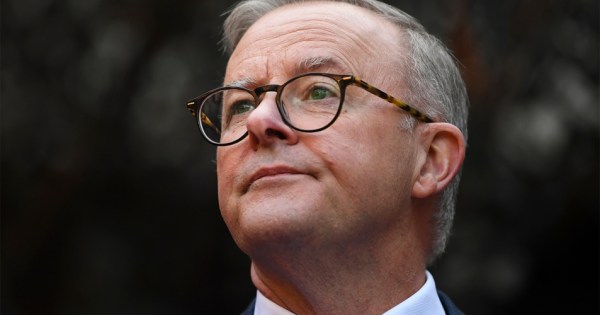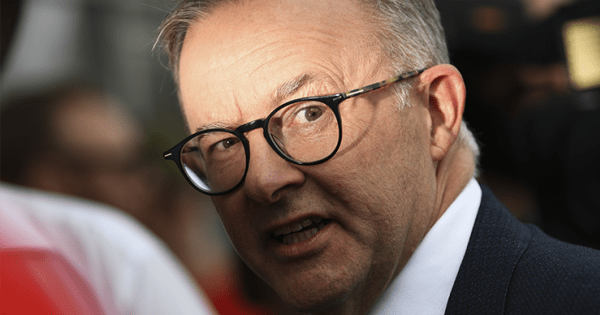With the business media in a frenzy and financial analysts doing great
impressions of stunned mullets, it’s opportune to reflect on what’s
happened recently to the price of National Australia Bank shares.
Because, since April, there’s probably not been a better example of a
complete disconnect between a share price and the underlying state of a
company’s business.
A $360 million currency options scandal, a dysfunctional board and a
prudential regulator virtually taking up residence in head office was
bound to take NAB management’s eye off the ball.
With under-performance in a division that historically had contributed
a quarter of the group’s profits, customer attrition and a competitive
margin squeeze in its home market, earnings had only one way to go.
The bad news duly broke on 16 April with a first half cash earnings
downgrade, before significant items, of between eight and ten per cent
on the March half 2003 – $2,027 million down to somewhere between
$1,824 and $1,865 million.
The market wiped $1.23 off the share price, to $29.79, establishing
some sort of base level for new chief executive John Stewart’s reign.
Less than a month later, first half cash earnings were confirmed at
$1,850 million – well within the forecast range – as Stewart spoke
unscripted to analysts about the challenges facing the country’s
biggest bank.
Previous management had underinvested in Europe for years while waiting
for a major acquisition, resulting in unsustainable earnings that would
take up to three years to turn around.
Other warnings included: corporate and institutional banking facing
near term challenges; the jewel in the crown – Financial Services
Australia – needing work; the bank’s culture – heavily criticised by
APRA – would take two years to transform.
Earnings in the second half would, at best, be the same as the first half.
The market had anticipated most of this, so it nudged the share price only marginally lower by 23 cents on the day to $29.07.
And that seems to be when the analysts and media commentators stopped listening.
Since then, there’s been a constant flow of counsel in Stewart’s
direction about how he should take short term action to fix what he has
already categorised as a series of fundamental, medium to long term
challenges for the business.
Impressed by his presentation skills and an openness that contrasts
sharply with NAB’s traditional mushroom-farming approach to public
relations, the analysts – like ancient prophets – declared the arrival
of the Messiah, the end of the bad news and the start of an ever-upward
movement in the share price.
“Sell the UK banks,” Stewart was advised, despite his belief that they
have a greater medium to long term value than their current sale price.
Anyway, what would he know – he’s only spent all of his career in UK
retail banking, after all.
And the business media? Well, they just reported what the prophets said – that’s their job after all, isn’t it?
And the share price? After hitting a low of $28.55 two days after the
half year results announcement, it trended steadily upward to reach a
high of $30.98 last Tuesday. If the prophets say the profits are
going up, the punters start buying.
Of course, if the prophets work for firms that make money when punters
buy shares, there might be some conflict of interest – but perhaps we
won’t go there today.
Did NAB do anything to fuel this price rise? No. It kept hosing
down the rumours about a sale of the UK banks that followed valuation
after valuation of their disposal price – by the analysts. But up
went the share price.
In the 15 day period from 15 June to 5 July that determined the price
to be paid by shareholders under the dividend reinvestment plan, it
went up $1.28 from $29.08 to $30.30.
All fuelled by guesswork and rumour, duly reported by the business
media. After the NAB board saw the third quarter financials, a
further earnings downgrade on July 14 shocked the market, the analysts
and the media.
It shouldn’t have, because it was largely due to factors already
identified by Stewart. Perhaps he’d previously underestimated their
magnitude, but essentially there was nothing new.
“Billions wiped off NAB’s market capitalisation,” shrieked
commentators. Perhaps, but the billions wiped off were only those
put on by optimistic analysts and an unquestioning business media in
the previous two months.
On July 14, the share price dropped to $28.85 – just 22 cents, or 0.75
per cent, below where it had been when Stewart had told everyone about
the problems NAB was facing – anyone that cared to listen to him that
is.
Disclosure: the writer has a beneficial interest in NAB securities.







Crikey is committed to hosting lively discussions. Help us keep the conversation useful, interesting and welcoming. We aim to publish comments quickly in the interest of promoting robust conversation, but we’re a small team and we deploy filters to protect against legal risk. Occasionally your comment may be held up while we review, but we’re working as fast as we can to keep the conversation rolling.
The Crikey comment section is members-only content. Please subscribe to leave a comment.
The Crikey comment section is members-only content. Please login to leave a comment.